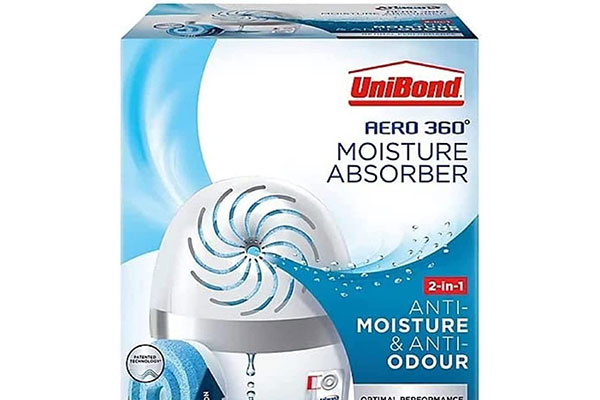We have spent a lot of time preaching how great dehumidifiers are, but what about the disadvantages of owning a dehumidifier? Like anything, choosing to buy a dehumidifier has positives AND negatives. We have spent some time pulling together what we believe are the main disadvantages of owning a dehumidifier.
The main disadvantages of owning a dehumidifier are electricity usage, noise output, and maintenance requirements. Unfortunately, some dehumidifiers consume a LOT of energy and this can result in a larger energy bill every month. Some dehumidifiers also produce quite a lot of noise. This can be a big drawback if you need to use the dehumidifier in your bedroom. The maintenance aspect of owning a dehumidifier is often overlooked. Water tanks will always need emptying and filters need to be cleaned to maintain optimum functionality.
Electricity Cost
Electricity cost is without a doubt the biggest drawback of owning a dehumidifier. We previously did some research on the most energy-efficient dehumidifier and the results were extremely interesting.
We found that there was a massive difference in electricity usage amongst dehumidifier brands. We found that cheaper brands often consume significantly more energy than premium brands such as Meaco dehumidifiers. We compared two different brands of 20L dehumidifiers and found that the cheaper one cost almost 100% more to run!

For this reason, we always recommend buying the most energy-efficient unit possible. Many people buy the first dehumidifier they see and are shocked when they leave it on 24/7 and see a huge spike in their electricity bill at the end of the month. You can easily avoid this problem by buying an energy-efficient dehumidifier. Some 12L dehumidifiers consume as little as 160 Watts whereas a cheaper version can consume up to 300 Watts.

Meaco MeacoDry ABC Dehumidifier
Low energy costs of 5p per hour based on 34p/kWh cost per hour.
If you are looking at purchasing a dehumidifier, make sure you do some research to find one that is energy efficient. You might have to pay more for a premium brand now, but it will save you lots of money over the course of months and years. Our article on the most energy-efficient dehumidifiers is a great place to start if you want an honest, energy-efficient recommendation.
Noise
Most types of electronic devices produce some type of noise, and dehumidifiers are no exception. Most dehumidifiers produce anywhere from 30dB (whisper-quiet) to 55dB (Normal conversation) of noise. Different people can tolerate different amounts of noise and bigger units generally make more noise.
As a rule of thumb, desiccant dehumidifiers are generally quieter than compressor dehumidifiers. This does not mean that you should buy one if you need a quiet dehumidifier however because they are usually also more expensive to run and more expensive to buy.

Similarly to electricity usage, cheaper dehumidifiers are generally noisier than premium brand dehumidifiers. If you require a dehumidifier in your bedroom like me, then you need to pay careful attention to the noise levels of the unit you are looking at. The amount of noise you can tolerate will also depend from person to person

Meaco MeacoDry Dehumidifier ABC Range 12L
Awarded a Which? Best Buy in 2021 and Quiet Mark for low noise (just 35dB).
I have found that ambient noise produced by the dehumidifier relaxes me and helps me sleep. This won’t be true for everyone. Some people require silence but white noise is well known to help many people with sleep. Here is a great article on white noise and how it can help you sleep.
So if you are worried about noise when purchasing a dehumidifier, be sure to carefully look for information on how much noise the unit produces. Generally, anywhere up to 35-40dB should be easy enough to sleep with. Any louder than 40dB and it might be too loud for many to sleep comfortably. If you don’t need the unit for a bedroom or living space, then noise should be less of a concern for you.
Dehumidifier Cost
This one is obvious, but the actual cost of the unit could be classed as a disadvantage. We believe a dehumidifier is worth the cost if you get the right one. For people on a budget, the upfront cost could be considered a disadvantage. Some people might find a premium brand dehumidifier too expensive and this might put them off purchasing.
Before deciding a dehumidifier is too expensive for you, we also encourage you to consider the positives of owning a dehumidifier. For example, a dehumidifier can help you eradicate excess moisture, dampness, mould and even help you dry your clothes instead of buying a tumble dryer!
Heat
There are 2 types of dehumidifier, the most common type is compressor-based. These produce more noise than the other type, desiccant dehumidifiers. Generally, it is best to use a compressor type in most home environments. This is because they function better at room temperature and are usually more energy-efficient.
Desiccant dehumidifiers function by using a moisture absorbing material to suck moisture in the air before it is dried by a heat fan. This means they produce less noise than compressors and also function better in environments below 15 °C.
Another feature of desiccant dehumidifiers that is rarely talked about, is the heat they produce.

We previously looked into desiccant dehumidifiers and their impact on room temperature. The air that comes out of a desiccant dehumidifier is on average 10-12 °C warmer than the air that went in! This could be a disadvantage for people who have a well-insulated home and are happy with their home temperature. It could be an advantage for many people in cold homes because it helps contribute towards heating the home and cutting down on the heating bill.
Maintenance
The final disadvantage of a dehumidifier is maintenance. Dehumidifiers generally are quite a low-maintenance product and do not require a lot of active intervention, but some maintenance is required. The most common form of maintenance is the emptying of the water tank. This is a tedious task and may have to be done anywhere from a few times a day to a few times a week.

Pro Breeze® 30L/Day Compressor Smart Dehumidifier with App
- High-capacity 4L water tank + continuous drainage hose
- Removes up to 30 litres of moisture per day
- App, Wi-Fi
Generally, more powerful units in areas of extreme moisture will require emptying more often than smaller units. Emptying a water tank is valuable time lost that could be spent doing something else. A clever way of avoiding this task is to buy a unit with a continuous drain hose. This allows you to plumb the dehumidifier into a drain so you never have to empty it.
The next more frequent form of maintenance is the cleaning of the filter. Most dehumidifiers have some kind of filter in front of the fan to stop the unit from sucking in dust or other debris. Over time, this filter will become dirty and will require cleaning. Usually, manufacturers advise gently hoovering the filter or gently wiping with a damp cloth. It is always best to look for and follow the manufacturer’s own cleaning instructions.
Cheaper Alternatives
So we know that the disadvantages of a dehumidifier include energy costs, noise, heat, and maintenance. We still firmly believe that a dehumidifier is a great product. All of the above disadvantages can be easily mitigated by purchasing a higher quality unit. If you have decided against buying a dehumidifier, however, then there are a few things you can do as a dehumidifier substitute.

UniBond AERO 360º Moisture Absorber
Ultra-Absorbent Dehumidifier, Helps to Prevent Condensation, Mould & Musty Smells, Recyclable, Refillable Condensation Absorber
Adequate Ventilation
Ensuring adequate ventilation to an area of damp is a good way of reducing the moisture level. This is particularly effective in good weather conditions because the air will be drier. Ventilation is less effective in winter because you will have to open a window to let in the cold and potentially damp air. This is why we still recommend purchasing a dehumidifier because the ventilation strategy is limited by factors such as bad weather and temperature.
Remove Damp Objects
Leaving damp objects in a room with moisture issues is a recipe for disaster. If you have existing damp issues in a room and leave things such as raincoats or damp towels hung up against walls, you may find mould behind them after a few days. In a damp room, don’t leave damp objects such as wet clothes and towels lying around. They make the problem much worse by increasing the moisture level.
We always recommend that you remove damp objects from a room with excessive moisture levels. This requires you to ensure nothing is pressing up against walls and making sure air can circulate throughout the whole room. This can require a lot of effort though and we think a dehumidifier is a much easier solution than this as it requires almost no effort to dry a room out.
Wrap up
When making a decision, you should always consider the positives and the negatives. We have clearly outlined the positives of owning a dehumidifier on this website, so we thought it was time to tell you about the negatives. This article has identified cost, noise, heat and maintenance as the key disadvantages of a dehumidifier. For some people, these may seem like big drawbacks. As we have seen though, there are many ways of mitigating these drawbacks.
For example, purchasing a more premium dehumidifier such as a Meaco or Pro Breeze can help you save money on energy and produce less noise than cheaper models. We hope this article has helped you to consider whether or not a dehumidifier is for you.

Pro Breeze® 30L/Day Compressor Smart Dehumidifier with App
- High-capacity 4L water tank + continuous drainage hose
- Removes up to 30 litres of moisture per day
- App, Wi-Fi
Please see some of our other articles and reviews before you make your final decision. Feel free to leave a comment if you have any questions, we are always happy to help.
Last update on 2025-02-28 / Affiliate links / Images from Amazon Product Advertising API







